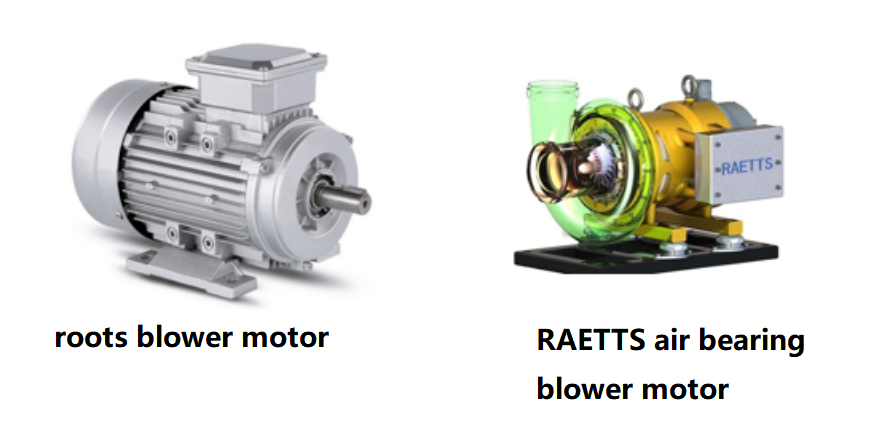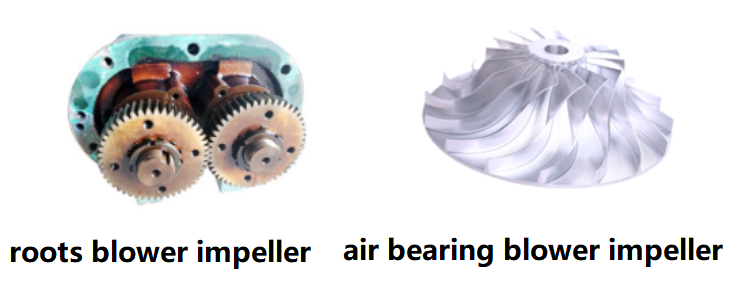A blower is like a vehicle, the core components are very important, which directly determine the performance and energy saving effect.
In the long run, a well-performing blower is a factory’s money-printing machine which can save a lot of electricity bills, a lot of maintenance and repair costs, and a lot of operational costs.
RAETTS air bearing blower and maglev blower are based on the general trend of “carbon neutrality” and “carbon peak”.
With the advanced aerodynamics and fluid mechanics technology in Europe and the United States, and the support of well-known domestic R&D teams, various industries can use cost-effective advanced blowers and the technology has been alliteratively improved to obtain a good market reputation.
The main technologies of RAETTS blowers include motor technology, bearing technology,cooling structure, compression technology , etc. Through high-tech investment and research and development, it has created a high-deficiency, low -noise and low-energy blower benchmark product,which is known as the “preferred energy-saving device in the cement industry”. The RAETTS blower has been rated as the “Energy Efficiency Star”of the energy-saving equipment by the China Ministry of Industry and information Technology.
Let’s compare the three core components of the RAETTS blower and the Roots blower:
1.Motor comparison

The efficiency of the traditional Roots blower is 50-60%. The Roots motor is a technology of the last century, which is large and heavy. The motor is easy to heat up during operation, and it is easy to burn the machine after long-term use. The motor speed control is very traditional and inconvenient.
RAETTS blowers are equipped with ultra-high-efficiency permanent magnet synchronous motors, with a motor efficiency of over 97% and a complete machine efficiency of over 87%. The motor runs more stably, has lower noise, is not easy to heat up, and has a life span of up to 30 years, which can be suitable for a variety of complex working conditions.
2.Bearing comparison

RAETTS air bearing centrifugal blower adopts the world’s most advanced air bearing, which generates an air film through spindle rotation, so that the spindle rotor is suspended , has no contact with the mechanical surface ,direct transmission, and high efficiency. After 30,000 start-stop tests, the bearing has a continuous operating life of up to 50 years, no lubricating oil and no oil pollution. The rolling bearing structure of the traditional Roots blower is complex, with many failures and short service life. It takes time and effort to replace bearings and lubricating oil, which will lead to pollution and environmental protection will not meet the standards for a long time.
3.Impeller comparison

The impeller of the Roots blower is made of cast steel or ductile iron. It is processed by CNC machine tools. The amount of cutting is small, the roughness is not accurate, the average life is only 4 years, the material strength is average, there is mechanical wear between the impellers, the efficiency is low, and the performance is unstable and the material is easy to deform . The Roots blower adopts the design of two-blade impeller or three-blade impeller, the efficiency is about 60%, and the action range is narrow.
The impeller of the air suspension blower is made of aviation aluminum material AL7075 five-axis machining, with high precision, corrosion resistance and low wear. Because the material is light, it has a scientific and reasonable air duct design, and the efficiency angle is optimized, so it has high efficiency and strong deformation resistance.
Sewage treatment is one of the industries with heavy pollution and high energy consumption in my country. How to save energy and reduce consumption, how to upgrade the standard, and how to achieve the industry’s double carbon standards as soon as possible? RAETTS air bearing blower, maglev blower, and high-speed centrifugal blower have always been the star-level benchmark blower products in the sewage treatment industry, and have been widely used in countries around the world, contributing to energy conservation and consumption reduction in the sewage treatment industry and carbon neutrality in the industry.



